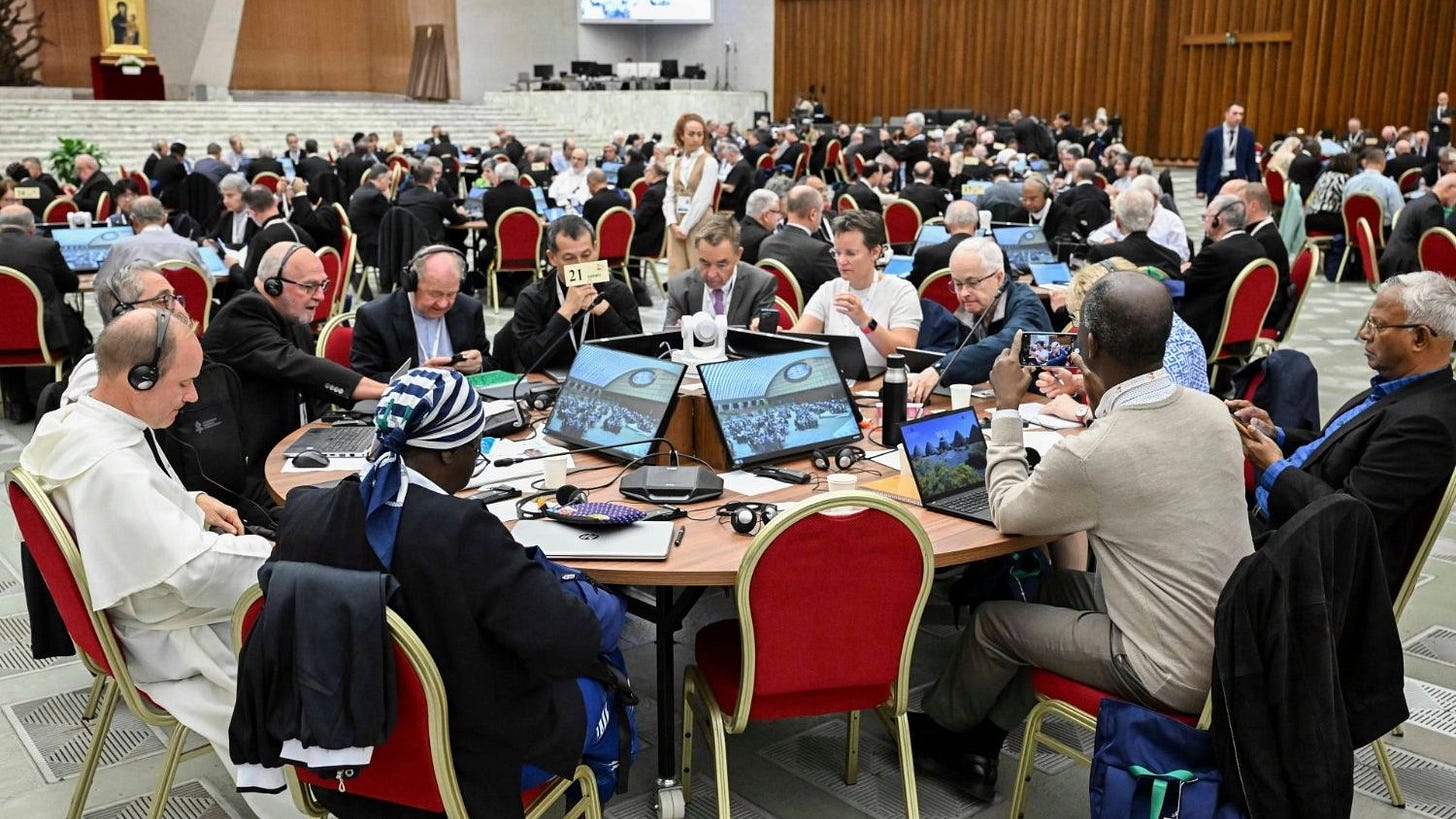SoS Sat Report: In a world of orphans, the Church is the family of those who have no family
Highlights of the today's discussion in the Synod Hall
Day 3 of the Synod on Synodality, and the Feast of St. Francis of Assisi, so the Holy Father took the opportunity to give name day greetings to all those like him bear the name of Francis, and also to those who celebrate birthdays to today, which included Paolo Ruffini, Prefect of the Dicastery for Communications. Michael Cardinal Czerny, S.J. was also congratulated on the 5th anniversary of his Episcopal Consecration.
Summary of the reports from the five language groups
The Vatican provided a summary of common themes that emerged from the reports of the five language groups from. The first is the very concept of synodality; understood not as a technique but as a style that calls for listening and conversion. The second is the relationship between synodality and baptism and Christian initiation. One of the presentations highlighted that “in a world of orphans, the Church is the family of those who have no family. In this same presentation it was asserted that “from the Church can come that proof of radicality that young people demand.” It is good that somewhere along the line the voices of young people were heard.
The image of the Church was the body of Christ was referred to several times, bringing together many members, that is to say many ministries and charisms, but in one body. The people of God is not as the sum of persons but is the ‘we’ of the Church, was also highlighted.
The theme of the role of women and the laity in the Church was brought up again. Recalling the image of the Church as a body, distinctions are also necessary. The theme of plurality as the right approach to the mystery of unity. Some language groups were asked to reflect without ideological and prejudicial approaches on some issues abroad. An emphasis on true ecclesial discernment as a means to overcome the us versus them, men versus women, the lay versus the ordained, local Churches verses the Universal Church. I didn’t know this type of identity politics has infected the Church. This is completely alien to me.
On holy orders for women it was said the study of certain ministries should not lose an emphasis on the contribution of women in the past and present have made. There were calls for equal dignity and co-responsibility of all the baptized as a basis precisely for the inclusion of women, laity and young people in decision making processes at various levels of church life.
Still on men and women relationship, there was a call from some members “to identify fears behind certain positions because these fears in the Church have led attitudes of ignorance and contempt toward women.”
Some of the language groups emphasised that the Instrumentum Laboris made few mentions of the family as the domestic church, and that we also need to deepen the relationship between local churches and culture, because each local church is shaped by a culture while remaining itself. With the plurality of cultures in this view, came the issue of language, asking for the Church to employ simple language.
This was a flavour of the presentations given by the five language groups, and unfortunately, we don’t know who said what.
The free interventions
After a small coffee break, free interventions followed where delegates had three minutes to say speak on anything. 36 delegates spoke touching on the following topics:
how to develop a spirituality of synodality
importance of the laity, whilst not to diminish the greatness and necessary of the ordained priesthood
the topic of women again, the “shortcomings in the fact that women are seen just as persons that aid in the parish but cannot preach or lead an organisation.”
someone said that some women feel a calling from God to be ordained then this same person gave examples of female missionaries
greater dialogue with different cultures, philosophies, and religions
the need for the Synod to listen to those in conditions of poverty and suffering, and the marginalized people in the Church, such as the divorced and ‘remarried’, and homosexuals.
clericalism in the Church, there is a Master, but there are no subjects, only brothers and sisters
prayer as a space where we make synodality concrete
using the liturgy to be a mirror of synodality, where “the minister presides over the celebration, but he is not only the only celebrant and the face-to-face of the priest with the assembly is the correct expression of synodality.
These were a hodgepodge of ideas, not really relevant to this week’s theme of a “Church less focused on bureaucracy and more capable of nurturing relationships with the Lord, between men and women, in the family, in the community, and between social groups.” But here we are.
Has Synodality lost the battle with the internet?
Keep reading with a 7-day free trial
Subscribe to CatholicSat’s Substack to keep reading this post and get 7 days of free access to the full post archives.


